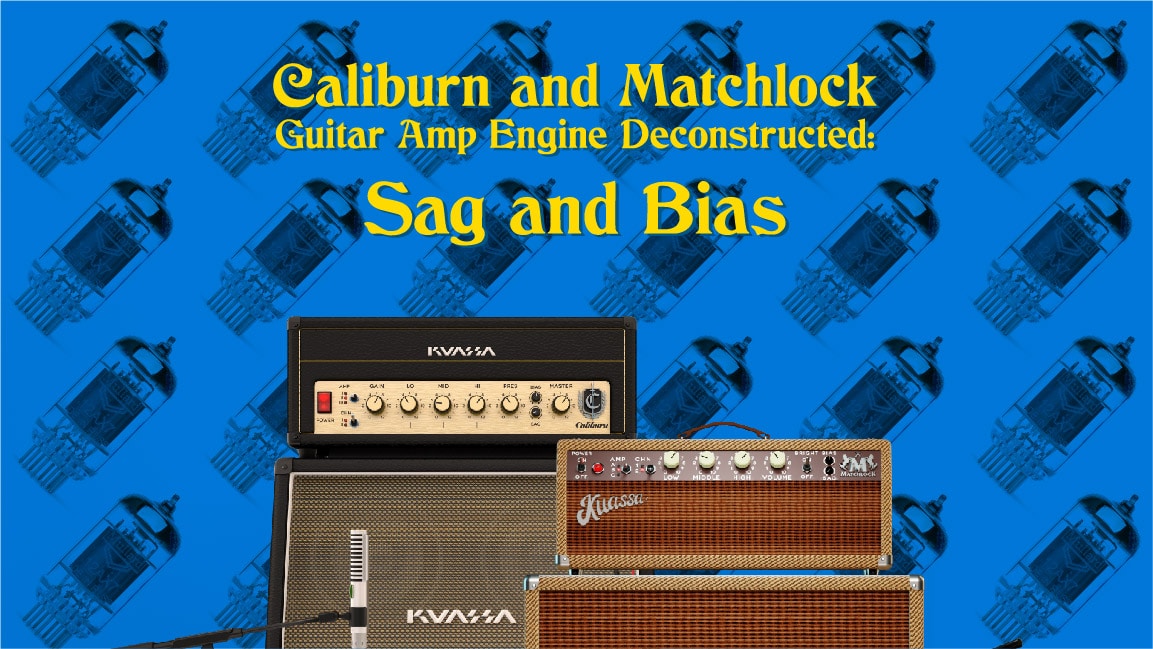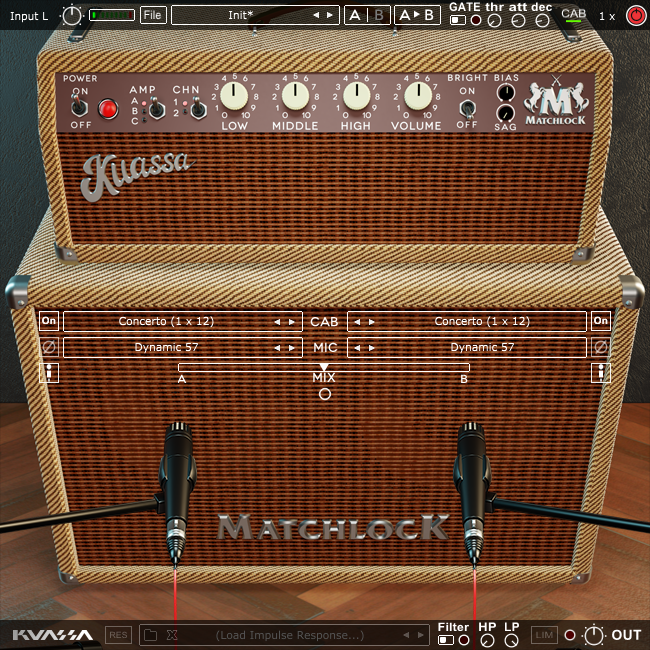
Image Source: Amplifikation Caliburn
Have you tried Amplifikation Caliburn or Amplifikation Matchlock? Those two have our 3rd gen amp engine inside, guarantees a satisfying and responsive feel for your guitar playing experience.
Bias: With more voltage biasing a tube, you’ll get the hotter tubes and an over-saturated tone.
Sag: Can be explained as “tube compression”. Sag happens when the power amp transformer drops the voltage for a fraction of a second, it’s like the signal is choked. Compressed sound!
Bias
Love it or hate it.
It depends on your playing style. When biasing, you can get a lot more gritty tone with low preamp gain and at the same time gets the feeling of tamed and compressed sound. With more voltage when biasing tubes, you’ll get more tube distortion and over-saturated tone while in real tube situations, tubes fed with higher voltage will have their lives shortened and there are possibilities to melt other components. In the other hand, less voltage or cold bias is another way that gives cleaner sound, clear headroom, and much much tighter low end.
For the starting point, it’s better to bias the amp to the manufacturer’s recommendation and have the right voltage operation of the valves. In our case using the Caliburn amp simulator ,the Marshall amp VST emulation / or Matchlock Guitar amp simulator/fender amp VST / we have the controls to shape the guitar tone to our taste and not worry about blowing out capacitors and setting up our studio on fire. Only the best guitar plugins offer the possibilities tweaking the bias and sag amp behaviour.
Sag
The opposite of Sag is tight. It’s giving more character to the amp’s overall sound.
The sag control is great in situations where you need something like Hendrix low gain to mid crunch “Little Wing” guitar sound, you can feel the sag “effect” there. Sag is easier to notice on long and bending sustainable notes. The overall saturation and tone feel different, making it sounds smoother and polished.
If you are more into fast runs, i.e staccato playing and shredding, you might be disappointed by the feel of how the amp is rounding up your picking attack and the notes’ definition would suffer.
If you have an expressive style with lots of dynamics and contradictions in your compositions, then the Sag is your friend.
So the sag thingy, in reality, happens when the power amp transformer drops the voltage for a fraction of a second, it’s a behavior that in this situation the signal sounds compressed.
The waveform starts with the full dB range of the initial signal and then it is choked out. The short squeeze and jump after happening for milliseconds, making the notes to “bloom” – all of this happens after a hard picking attack and a voltage spike on the input stage produced by the guitar signal.

Later on, people could get the same effect using compressor units. Either pedals or outboard rack studio compressors.
Start experimenting with sag on low gain and clean tones first. Using the bias and sag with high input gain at the preamp stage won’t do much effect because the signal is already compressed and saturated by the preamp tubes.
Then, turn up to moderate gain, turn up the output power amp level while also tweak the Bias control.. You should hear an increase in the volume level, more saturated low end, and overall gritty and grainy tone.
After tweaking the basics, turn up the Sag slightly and play long sustained notes. Pay attention to how the signal changes. Generally, it sounds more rounded while the high end of the notes is smooth and “singing“.
Playing palm-muted riffs in the higher register will emphasize the “effect” and give you the best idea of how Sag and Bias control work.
You have the freedom to experiment and find your own tone in any digital audio workstation. Guitar amp software gives you the ability to fully control the amp’s reaction and behavior depending on your taste and playing style.
Considering the fact that most modern amp simulators are based on real physical amps, you can achieve the same feel and playing experience.
The only limitations are probably on the quality of your signal path: audio interface, input pre-amp, guitar cables, and the pickups on your instrument. Most of today’s sound cards are equipped with Hi-Z or Instrument input, which designed and impedance-matched for guitar recordings and neutral frequencies range.
Dive deep and explore the amazing possibilities with Kuassa’s Guitar Amp Simulators.
The Sag and The Bias are there to flourish your musical and expressive playing with no limits.



